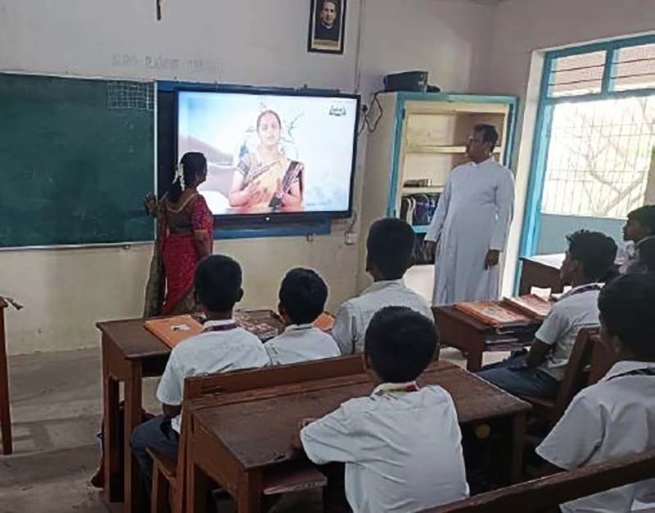The boards have been installed for classes in eighth, ninth and eleventh grades as well as the audio video hall for staff. More than 700 youth will be impacted by this new technology. Most of the students are from challenging family situations. The technology will also support 63 staff people. On special occasions, other classes will have access to this technology.
One young student said that he found it easier to concentrate and grasp concepts better thanks to the new boards. Other students have voiced the same opinion. Salesians report that many students thanked the school management for having brought about this enhancement into the classroom. Parents have also been pleased.
A Salesian said, “Don Bosco Higher Secondary School has taken steps to sustain engagement and inquisitiveness with improved comprehension levels. The methodology of teaching is interactive and enjoyable. During parent-teacher association meetings, the parents have expressed happiness about the educational progress of their children and the improvement of their exam grades. Given the success of these interactive boards, we plan to expand this technology to all 42 classrooms in the school.”
India has the world’s fourth largest economy but more than 22% of the country lives in poverty. About 31% of the world’s multidimensionally poor children live in India, according to a report by the Oxford Poverty and Human Development Initiative.
India’s youth face a lack of educational opportunities due to issues of caste, class and gender. Almost 44% of the workforce is illiterate and less than 10% of the working-age population has completed a secondary education. In addition, many secondary school graduates do not have the knowledge and skills to compete in today’s changing job market.
Source: Mission Newswire


